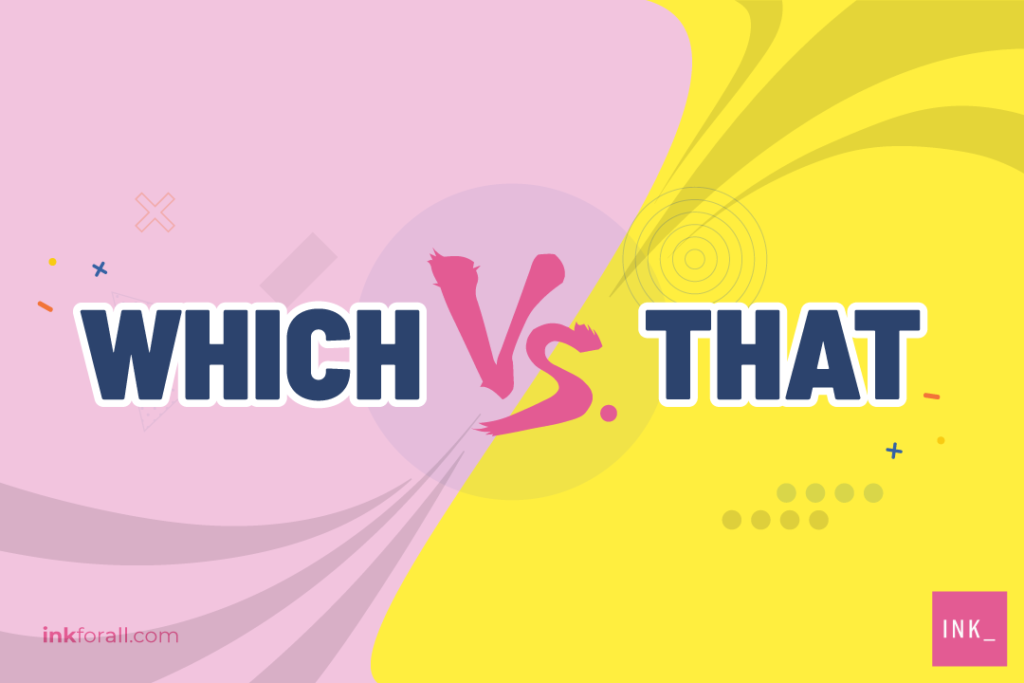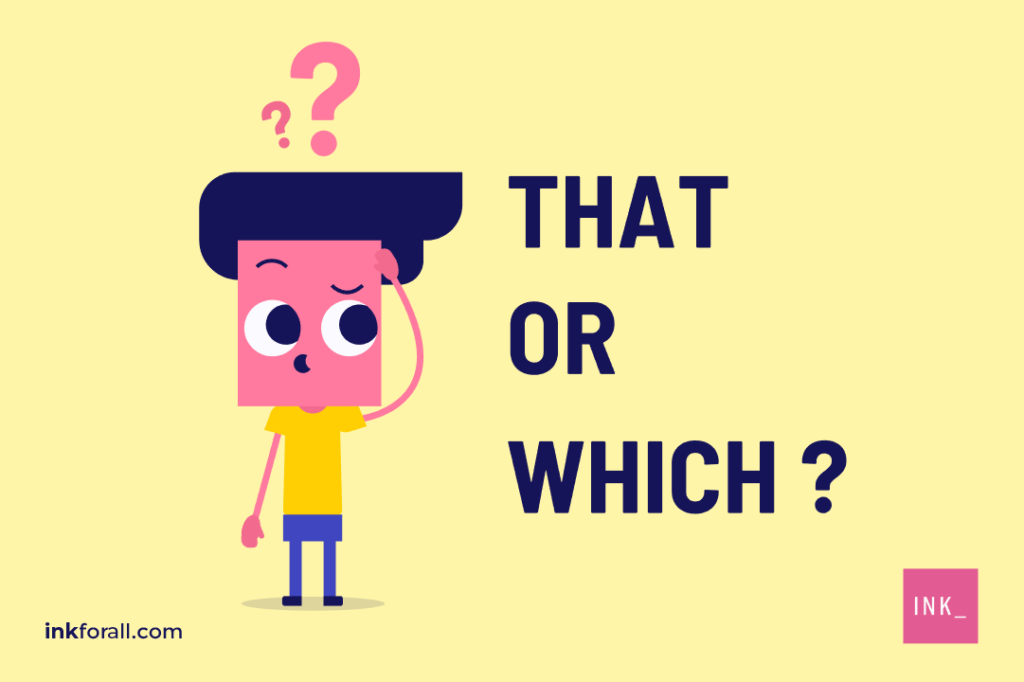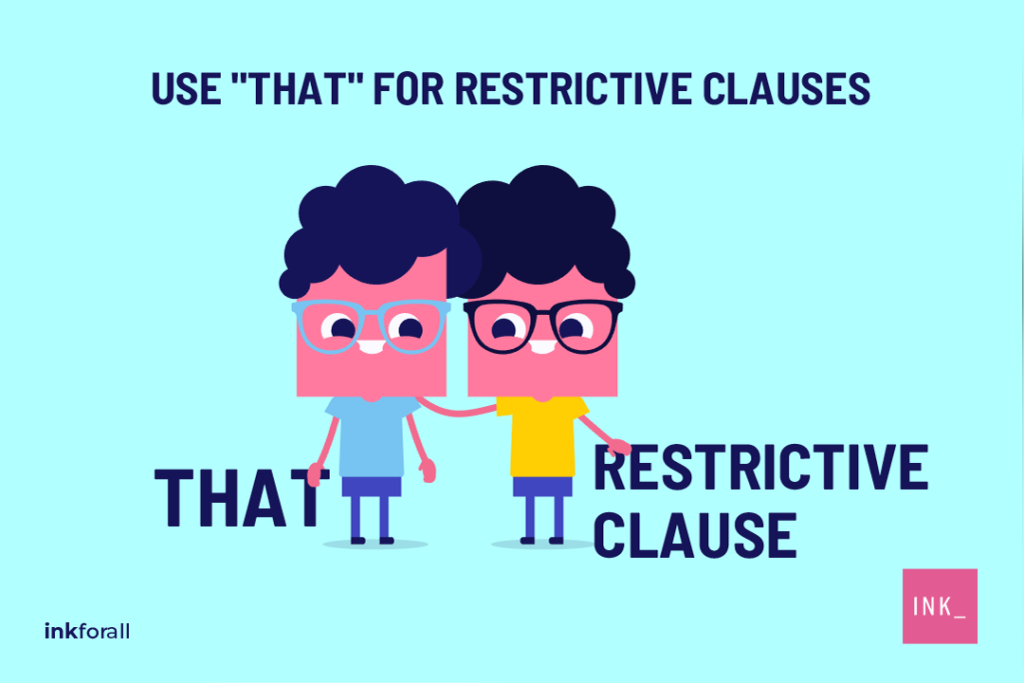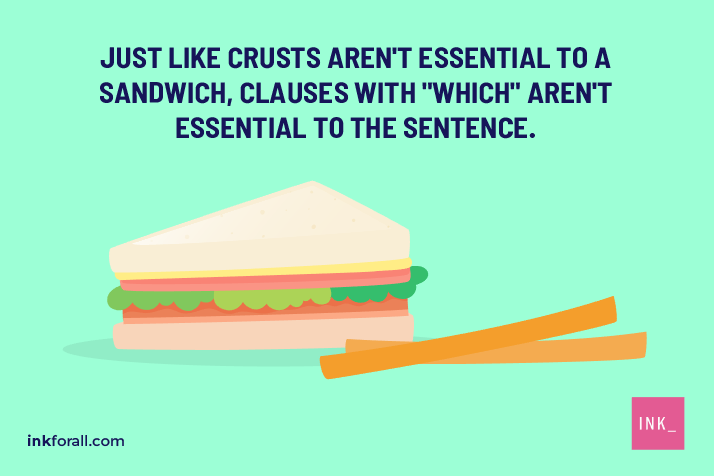For two such common words, ‘that’ and ‘which’ cause a lot of headaches. This is probably because UK and American English differ slightly in terms of how they’re used. But what are these differences? And how should you use ‘that’ and ‘which’ in your written work? Let’s take a look.
Relative Clauses
‘That’ and ‘which’ are both relative pronouns. This means they are used to introduce information in a sentence that tells us more about a noun.
For example, if we say ‘the cat is outside’, nothing in the sentence specifies which cat we mean. It could be any cat.
But if we say ‘the cat that stole your lunch is outside’, the relative clause ‘that stole your lunch’ gives us an idea about which cat we’ve spotted.
(Photo: brownpau/flickr)
To explain the difference between ‘that’ and ‘which’, we need to look at restrictive and non-restrictive relative clauses.
Restrictive and Non-Restrictive Relative Clauses
A restrictive relative clause restricts the meaning of what we’re saying. For example, the restrictive clause in this sentence is ‘that I built’:
The house that I built survived the storm.
In this case, ‘that I built’ is restrictive because it specifies the particular house we’re talking about. This implies that we’re using this extra information to pick one house out of several possible houses.
(Photo: Ryan Kitko/wikimedia)
A non-restrictive clause, on the other hand, simply provides more information about the thing we’re talking about rather than identifying it:
The house, which I built, survived the storm.
In this case, the relative clause is set apart with commas because it isn’t essential to the sentence. We thus use non-restrictive clauses if there is no doubt about what we’re discussing but want to provide extra detail.
In summary, we can think of these different clause types as follows:
- Restrictive clauses identify the thing we are talking about, so they cannot be removed from a sentence without changing its meaning.
- Non-restrictive clauses provide extra, non-essential detail about the thing we’re talking about. As such, we set this information apart from the main sentence with a comma or pair of commas.
Word Choice: That or Which?
You may have noticed that we use ‘that’ for a restrictive clause and ‘which’ for a non-restrictive clause in the examples above. This is the standard usage in American English, so you will see restrictive clauses written like this a lot.
In British English, however, ‘that’ and ‘which’ can both be used for restrictive clauses, allowing for a bit more flexibility. But in both the US and the UK, non-restrictive clauses are only written with ‘which’.
If you want to avoid confusion, use ‘that’ for restrictive clauses and ‘which’ for non-restrictive clauses. But this is a matter of style for restrictive clauses, especially in the UK. Keep the following in mind if you’re unsure:
|
That or Which? |
Example Sentence |
British English |
American English |
|
That (Restrictive) |
The house that I built survived. |
✓ |
✓ |
|
That (Non-Restrictive) |
The house, that I built, survived. |
✗ |
✗ |
|
Which (Restrictive) |
The house which I built survived. |
✓ |
✗ |
|
Which (Non-Restrictive) |
The house, which I built, survived. |
✓ |
✓ |
Find this useful?
Subscribe to our newsletter and get writing tips from our editors straight to your inbox.

From the team that provides tutoring, proofreading, and resume writing to ESL learners.
From the team that provides tutoring, proofreading, and resume writing to ESL learners.
-
-
“That” vs. “Which”: Word Choice in English Can Make a Big Difference
Text Version:
Sometimes in English, the correct punctuation and word choice can make quite a big difference.
You might have heard the story about the English teacher who asks his students to punctuate the following series of words to form a grammatically correct sentence: “Woman without her man is nothing.” Amusingly, the men all wrote, “Woman, without her man, is nothing.” And at the same time, the women all wrote, “Woman: Without her, man is nothing.” This story emphasizes the importance of proper punctuation.
But did you know that something as simple as deciding whether to use “that” or “which” in a sentence can also make a big difference? What exactly is the difference between “that” and “which”? Both “that” and “which” can be used in many constructions, but the confusion usually arises when they are used in relative clauses.
The difference between “that” and “which”
To begin to understand the difference, we first must understand the two types of relative clauses: defining (or restrictive) and non-defining (or non-restrictive) relative clauses.
Defining relative clauses contain information essential to the meaning of the sentence. If this clause is not included, the meaning of the sentence will be greatly affected; in fact, it might not make any sense at all.
Let’s look at an example.
“I like the painting that is hanging above the couch.”This is a defining relative clause because it provides important information about the specific painting I am talking about. I don’t like all the paintings in the house, but rather, I specifically like the painting that is hanging above the couch.
Contrastingly, non-defining relative clauses contain extra information that is not important to the meaning of the sentence.
Let’s look at an example.
“I live in New York, which is one of the biggest cities in the world.”Notice that the relative clause provides extra information and that the sentence would still make sense if the relative clause were removed. Non-defining relative clauses are separated by commas at each end of the clause and thus are easily recognizable.
If I’m writing a biography about my life and I mention, “My sister, who is a fashion designer, lives in New York,” you can immediately know that I have one sister. She is a fashion designer, and she lives in New York. However, if I remove the commas and instead write, “My sister who is a fashion designer lives in New York,” you now know that I have more than one sister, and this relative clause is defining the specific sister I am speaking about.
If you’re very observant, you might have noticed from the above examples that the defining relative clause used the word “that,” and the non-defining relative clause used the word “which.” That’s the difference.
Now, let’s look at some examples where this can make a big difference.
Example 1
Defining relative clause: The university that is in the center of the town has night classes.
Non-defining relative clause: The university, which is in the center of the town, has night classes.In the defining relative clause, it can be assumed that there is more than one university in the town, and the one that is in the center of the town is the one that has night classes. In the non-defining relative clause, we can assume that there is only one university in the town, and it just happens to be in the center.
Example 2
Defining relative clause: The bathroom that is located on the second floor was just redone.
Non-defining relative clause: The bathroom, which is located on the second floor, was just redone.The defining relative clause implies that there is more than one bathroom in the house. The non-defining relative clause implies that there is only one bathroom, and it is on the second floor.
It’s quite amazing the difference that just one word can make.
If you found this guide helpful, think about who else could benefit from it. Do you have friends who mix up “that” and “which”? Share this guide with them to help them out.
Diane is an English teacher from New York with over four years of experience teaching English to students from all over the world.
-
This page contains affiliate links. -
← Next Post
Previous Post →
В английском полно слов-определителей и вопросительных слов, с которыми все не так просто. Например, у what и that разница не столько в буквах, сколько в смыслах, хотя на русский они оба переводятся, как «что».
Но русский перевод лучше оставить в стороне. Здесь главное уловить истинное значение и связь между этими английскими словами, а уж на родном языке можно как угодно сказать — и «что», и «который», и «какой».
That и which как относительные местоимения
Чтобы понять ту роль, которую играют иногда that и which, нужна небольшая грамматическая справка.
Относительные местоимения (relative pronouns на английском) — это такие слова, которые нужны, чтобы связать две части предложения. Одна его часть обычно называет объект (о чем или о ком говорится), а вторая дает о нем какие-то подробности.
Относительные местоимения в английском бывают следующие:
Who — кто
Whom — кого
Whose — чей
Which — который
That — который
- Who и whom используются, когда мы говорим о людях:
The girl who played with fire.
Девочка, которая играла с огнем.
- Which — о вещах:
Facebook blocked the pages which I liked.
Фейсбук заблокировал страницы, которые я лайкнул.
- That — и о том, и о другом.
The girl that I like.
Девушка, которая мне нравится.
The idea that I cannot accept.
Идея, которую я не могу принять.
Relative pronouns используются:
- После существительного, чтобы уточнить, какой человек (предмет) имелся в виду.
The money that I earned.
Деньги, которые я заработал.
The man who changed the world.
Человек, который изменил мир.
- Чтобы дать больше информации о предмете или человеке (в этом случае нельзя употреблять that) :
My aunt, who is 69, still works as a teacher.
Моя тетя, которой 69 лет, все еще работает учителем.
The house, which is owned by Santa is in Lapland.
Дом, которым владеет Санта, находится в Лапландии.
Остановимся на местоимении that.
Когда в предложении встречается that, это значит, что до этого момента уже было упомянуто что-то, о чем шла речь. «That» используется, чтобы описать и определить вещь, про которую вы УЖЕ говорили.
Например:
Where is the book? (Где книга?)
Which book? (Какая книга?)
The book that I was reading. (Книга, которую я читал).
I saw that movie. (Я видел то кино).
Which movie? (Какое кино?)
The movie that you were talking about. (Кино, про которое ты мне рассказывал).
«That» определяет предшествующее существительное и соединяет объект, упомянутый ранее, с другими членами предложения.
То есть, в примере
The car that cost me around 10000 Euros.
Машина, которая стоила мне около 10000 евро,
До того уже была упомянута машина, именно поэтому дальше идет that.
Употребление what и which в вопросах. Разница между which и what.
Основная функция слова what — задавать вопросы, начинающиеся на «что?», «какой?».
Примеры вопросов:
What is he doing? (Что он делает?)
What is love? (Что такое любовь?)
What are your hobbies? (Какие у тебя хобби?)
Which — более формальный способ задать похожий вопрос. Особенно часто это слово употребляется, когда нужно выбрать из нескольких вариантов. В русском ему соответствуют вопросительные слова «который?» «какой именно?»
Можно заменить which с помощью what, и ошибки не будет.
Например:
Which of the following answers is true?
Какой из следующих ответов правильный?
В этом предложении определенно есть ситуация выбора, поэтому which идеально подходит. С what предложение тоже «работает»:
What of the following answers is true?
Но наоборот сделать получается не всегда. Если мы захотим изменить
What is your name? (дословно: какое твое имя?)
на
Which is your name?
это будет иметь смысл только в том случае, если есть список с именами, и говорящий показывает его собеседнику и просит сделать выбор.
Отличие what от that
Мы уже сказали, что с what часто начинаются вопросы.
Но это слово встречается и в утвердительных предложениях. И если в них нет ответа на вопрос «что?», то эту недостающую информацию можно заменить местоимением what:
What he did was terrible.
То, что он сделал, было ужасно.
(Что он сделал? Покормил аквариумных рыбок кошачьим кормом? Надел носки разного цвета? Мы не знаем, поэтому используем what).
Обычно, говоря «what» подразумевают «вещь, которая», или «то, что».
What you need is a cup of strong hot coffee.
(Та вещь, которая тебе нужна — чашка крепкого горячего кофе).
Возьмем фразу:
What I’m going to tell you is very important.
(То, что я собираюсь тебе рассказать, очень важно).
Неизвестно, что автор собирается рассказать. Поэтому он использовал what.
Но почему бы не сказать:
That I’m going to tell you is very important?
That, как мы знаем, используется после существительного, когда мы уже знаем, о чем идет речь. Поэтому ни с того, ни с сего, без контекста, это местоимение просто не воспринимается.
А что, если мы изменим этот пример, и добавим существительное перед местоимением? Сможем ли мы тогда использовать that?
The secret that I’m going to tell you about is very important.
Секрет, о котором я тебе расскажу, очень важный.
Получилось! Поставив существительное «секрет» в начало предложения, мы сделали возможным использование that.
Итак, что же нового мы сегодня узнали?
- That и which могут связывать части предложения и переводиться, как «который».
- Which в вопросительных предложениях подразумевает ситуацию выбора.
- That говорит об определенности, о том, что предмет разговора нам знаком.
- What используется там, где есть недостаток информации.
If you aren’t sure when to use which vs. that in your writing, don’t feel bad. They are one of the most common questions I get from readers, wondering when it is correct to use which word.
Which and that are both complicated words in English with many different uses inside a sentence. And while they both can be used in other constructions, the confusion between the two usually centers on their uses as relative pronouns. If you’re not sure what these are, don’t worry; everything you need is explained below.
What is the Difference Between Which and That?
Many people say the differences between these two words aren’t really differences at all. Still, many people yet swear by the traditional rule I will outline below.
That and Which as Pronouns

- The woman who opened the door for you is my mom. (CORRECT)
- The woman that opened the door for you is my mom. (WRONG)
Which and that are used, instead, for inanimate objects or animals without a name. For example,
- The car, which had already ran out of gas, now has a flat tire.
- The bat that I threw hit the bleachers.
- I am sick of the dog that keeps barking.
This rule is followed by the AP Stylebook but not the Chicago Manual of Style. It’s not clear that it’s absolutely necessary, but if you are writing a paper or any piece of formal writing, it’s probably best to observe the rule.
When to Use That
The traditional American English rule regarding that and which states that that should be used with restrictive clauses and which should be used with nonrestrictive clauses.
A restrictive clause is one that is essential to the meaning of a sentence. They are also sometimes called essential clauses. A restrictive clause is used to narrow a category or identify a particular item being talked about. It restricts the meaning, making it more specific. For example,
- All bags that are over 50 pounds will not be permitted.
The words that are over 50 pounds restrict the kind of bags you are talking about by making your sentence more specific. Without them you would be saying that no bags are permitted at all.
You should also note that restrictive clauses are not set off by commas.
When to Use Which

A nonrestrictive clause is one that is nonessential to meaning of the sentence. If you removed it, the sentence would still be understood. This doesn’t mean they are pointless; nonrestrictive clauses add some bit of extra information to the sentence. For example,
- My bedroom, which is on the second floor, is very messy.
The words which is on the second floor add an extra piece of information about my bedroom. But if you were to remove them from the second, you would still understand that my bedroom is messy.
Nonrestrictive clauses, since they are parenthetical in nature, are always set off by commas. As you see above, there is a comma before which and after floor. These commas are very important because they can change the entire meaning of a sentence should you not have them in place.
The Chicago Manual of Style holds that which can be used restrictively when it is preceded by a preposition. For example,
- The situation in which you put us is very dangerous.
- The school from which I graduated is very prestigious.
Why You Need To Use That and Which Correctly
Restrictive clauses (or essential clauses) do not have commas introducing or surrounding them, but nonrestrictive (or nonessential clauses) do have commas introducing or surrounding them.
Now, as I said above, misplacing a comma when you are dealing with restrictive and nonrestrictive clauses can change the entire meaning of your sentence. The same goes for using that when you really mean which. For example, consider the following sentences,
- My dirt bike that is green goes really fast.
- My dirt bike, which is green, goes really fast.
The first sentence suggests that we might have more than one dirt bike and that out of our collection the green one is the fast one.
The second sentence, since the words which is green can be removed, simply informs the reader that my dirt bike is green, and it can go really fast.
It should be noted, however, that the commas in these sentences are really doing the brunt of the work, not necessarily the words which and that.
Quiz and Sentence Examples
Below are a few sentences you can use to practice,
- My mother was a great woman ______ always helped me with my writing.
- The year ______ our daughter was born was a great year.
- This book, ______ was written last November, is a great read.
- Any book ______ gets them reading is worth having.
- He scored 81 points in that game, ______ is hardly an easy accomplishment.
Display the answers below
Remember the Difference
A good way to remember when to use that vs. which is that “which clauses” can be removed from the sentences. You could say that you can throw out the “whiches” and no meaning will be lost.
The “thats,” however, cannot be removed from your sentences without changing the meaning.
A Note on British English Usage
I began by saying that this is a standard American English rule. In British English, writers seldom observe the distinction between that vs. which, and even though Fowler’s Usage Guide recognizes that much is to be gained by recognizing the distinction, not all British writers do.
Summary
That and which should not be used to refer to people.
That is reserved for restrictive clauses, essential to a sentence’s meaning.
Which is used with nonrestrictive clauses, nonessential to a sentence’s meaning.
Answers
- Who
- That
- Which
- That
- Which
Contents
- 1 What is the Difference Between Which and That?
- 2 That and Which as Pronouns
- 3 When to Use That
- 4 When to Use Which
- 5 Why You Need To Use That and Which Correctly
- 6 Quiz and Sentence Examples
- 7 Remember the Difference
- 8 A Note on British English Usage
- 9 Summary
-
- 9.0.1 Answers
-
Main Which vs. That Takeaways:
- Use that in defining clauses. These are essential to the sentence because if you remove this kind of clause, the meaning of the sentence changes.
- Use which in non-defining clauses. These are not essential to the sentence because if you remove this kind of clause, the meaning of the sentence doesn’t’ change.
- Commas usually offset non-defining clauses.
- Use the mnemonic “sandwich crusts aren’t essential” to remember that “which” and non-defining clauses go together.
What is the Difference Between Which and That?
Use that to indicate something specific. It usually introduces a defining clause that doesn’t need commas. On the other hand, use which to add more information about something specific. It usually introduces a non-defining clause that requires a comma before which and after the last word in the clause.
What is the Rule for Using That or Which?
Here is a quick and easy rule for using that or which correctly: if you remove the clause and the meaning of the sentence changes, use that without commas. If you remove the clause and the meaning of the sentence doesn’t change, use which with commas.
Let’s apply this rule for using which vs. that with our apple examples:
How Do You Remember the Difference Between Which and That?
That is used with a restrictive clause. The latter is the part of the sentence that you can’t remove, otherwise it would leave it with an incomplete thought. Which is used with a non-restrictive clause, or the part of the sentence that you can remove without changing its meaning. If you want to easily remember the difference and use the correct word in your sentence, follow this simple tip:
Remove the word or phrase that comes after where you’re supposed to place that or which in a sentence. If it changes the meaning of the sentence or renders it incomplete, then use “that.” If the sentence’s meaning remains intact, then use “which.”
Take for example the sentence: “It snowed last night, _____ was unexpected because it was not in the weather forecast.” Let’s remove the phrase that comes after the blank.
Does removing the phrase change the meaning of the sentence? Are we left with an incomplete thought?
The answer is NO because the phrase “It snowed last night” is an independent clause and is already considered a complete sentence. Following the tip we provided, you need to use “which” to join the non-restrictive clause “was unexpected because it was not in the weather forecast” with the independent clause “It snowed last night.”
Here’s another example:
Does the remaining clause express a complete thought? If the answer is yes, use which. If the answer is no, use that.
When to use That
A defining clause is also known as an essential clause or a restrictive clause. That’s because it adds essential information to the sentence. We’re “restricted” from removing it from the sentence. Without it, the meaning would change.
The example above contains a defining clause. The phrase “that have a wormhole” defines exactly which apples I’m talking about.
To confirm that this phrase is a defining clause, try removing it from the sentence:
The meaning of the sentence changed.
For example, instead of talking about apples with wormholes specifically, I might be talking about apples in general. Without this defining clause, it’s not clear.
Therefore, we confirmed that this is a defining clause. And as a result, that is the correct word to use.
When to use Which
A non-defining clause is also known as a nonessentialclause or nonrestrictive clause. It’s not essential to the meaning of the sentence, so we’re not restricted from removing it. Without it, you might lose some fun details or interesting “color” but the core meaning wouldn’t change.
Conversely, the example contains a non-defining clause. The phrase “which are my favorite fruit” does not define which apples I’m talking about.
Instead, it gives additional information about apples in general.
Let’s confirm this phrase is a non-defining clause by removing it from the sentence. The sentence should still make perfect sense without it.
And it does. Without this phrase, the sentence still makes perfect sense. Therefore, which with commas is the correct choice here.
Pro Tip: Some non-defining clauses are easy to spot because they’re offset by commas or parentheses.
Examples of Which vs. That in a Sentence
In this example, “that has bad breath” is a defining clause because it’s defining something about the dog.
The writer may have several dogs, but he or she is specifically talking about the one that has bad breath. That is the right choice in this case.
Here, we know “thatare hybrid” is an essential phrase. Without it, the phrase “cars use less fuel” has a different meaning.
Since “thatare hybrid” is a restrictive clause, we’re right to introduce it using that.
Tara’s shoes are bright green, whether we know that she bought them on vacation or not.
That means “whichshe bought while on vacation” is a nonrestrictive phrase, and which is the correct word to use.
While it’s interesting to know where the author found the nail, it’s not essential.
If you omit “whichwas left outside a construction site,” the meaning of the sentence remains. Which is the right choice.
Using That vs. Which With Prepositions
Sometimes you may see thatorwhich paired with another introductory word. The same rules apply even if thatorwhich follows a preposition, such asby, for, or on.
Another Trick to Remember That vs. Which: The “Sandwhich”
When I was a kid, I wasn’t a big fan of crusts. Whenever I made a sandwich, removed the crust from the bread.
As an adult, I’ve made peace with crusts, but they still help me remember how to use that vs. which in a sentence.
Just like you can remove sandwich crusts because they’re not essential sandwhich, you can remove which clauses because they’re not essential to the sentence.
If you remove the sandwich crusts, the core of the sandwich doesn’t change. It’s still a sandwich and probably still delicious.
Similarly, if you remove the which clause, the core of the sentence doesn’t change. You’ve might lose little a little bit of detail, but the meaning stays the same.
What’s more, commas usually contain a nonessential or non-defining clause. Think of these commas as the bread on either side of the which clause sandwich.
Therefore, just associate which with sandwich to easily remember when to use which.
There are many ways to use which or that in a sentence. The important thing is to be sure you’re using them correctly. That means sticking to which when you have a nonessential or nonrestrictive clause and using that for essential or restrictive clauses.
If ever you’re not sure whether to use which vs. that, remove the clause and see if the meaning of the sentence changes.
- Did the meaning change? Then use that.
- Is the meaning the same? Then use which with commas.
Is it Which or That? Test Your Knowledge!
Which vs. That Question #1
Correct!
Wrong!
The answer is FALSE. Use “which” for non-defining clauses and “that” for defining clauses.
That vs. Which Question #2
A. Essential clause
B. Defining clause
C. Restrictive clause
D. All of the above
Correct!
Wrong!
The answer is D. An essential clause is also called a defining or restrictive clause.
That or Which Question #3
Correct!
Wrong!
The answer is B. Since “make her cry” is essential to the sentence’s meaning, use “that.”
Which or That Question #4
Correct!
Wrong!
The answer is A. Since “made her cry” is not essential to the sentence’s meaning, use “which.”
Which or That Question #5
A. “Which” goes with nonessential clauses.
B. “That” goes with essential clauses.
Correct!
Wrong!
The answer is A. This is a reminder that “which” and nonessential clauses go together.
Read More: Affect Vs. Effect: How To Choose The Correct Word
BizWritingTip reader: “Will you please clarify the correct use of ‘that’ versus ‘which’ in qualifying sentences? It seems to me people often use ‘which’ when they should be using ‘that.’ ”
BizWritingTip response: It’s interesting that I have received three separate requests for this information in the past two weeks. So although I have dealt with this question before, I will discuss it again.
Basically, the use of “which” versus “that” is subjective. It’s all about what the writer wants to emphasize.
“Which” indicates that the thought following is not essential to the meaning of the sentence. The word “which” is preceded by a comma. That’s why you often get a green squiggle under the word. It’s to remind you to insert a comma before “which” (or to change the word to “that”). Unfortunately, your computer cannot tell you where to place the second comma if the non-essential thought is in the middle of the sentence. But you do have to add it.
Examples (correct)
The manager referred to a document, which is often quoted by others, to strengthen his argument. (Two commas must be added as the non-essential phrase — beginning with “which” — is in the middle of the sentence.)
I have enclosed a brochure, which will answer many of your questions. (Only one comma is needed because the non-essential phrase ends the sentence. The emphasis is on the brochure.)
“That” indicates the thought following is essential to the sentence. Never put a comma before or after “that.”
Examples (correct)
The manager referred to a document that was written some years ago.
The proposed legislation will affect all services that involve food distribution.
I have enclosed a brochure that will answer many of your questions. (The emphasis is on the brochure’s purpose.)
Note: Many people consider “that” a useless word. You can often tighten your sentence by deleting it.
Examples (correct)
The manager referred to a document written some years ago.
The proposed legislation will affect all services involving food distribution.
To summarize, “which” and “that” are often interchangeable depending on the point you want to emphasize. Just remember to always put a comma before “which.” Never put a comma before “that.”
Download Article
Download Article
It can be hard to know when to use “which” and when to use “that” in a sentence, even if you are a native English speaker. Knowing the difference between a restrictive and non-restrictive clause and when and how to use them can help you learn how to use “which” and “that” correctly.
-
1
Determine what a restrictive clause is. The key to knowing if you need to use “which” or “that” in a sentence is deciding if you need to create a restrictive or non-restrictive clause.
- A restrictive clause is one that sets limits on the subject of the sentence. A restrictive clause also contributes to the meaning of the sentence – the sentence won’t make sense without the restrictive clause.
- For example, the sentence “I like flowers that are purple” has a restrictive clause in it and removing it would change the meaning of the sentence. “That are purple” is the restrictive clause, because without it you would just be telling people that you like flowers in general.[1]
-
2
Determine what a non-restrictive clause is. A non-restrictive clause adds information to the sentence, but removing it doesn’t change the meaning of the sentence. These are usually separated by commas before and after the clause. They may also be distinguished by dashes or parentheses.
- For example, the sentence, “The car, which is red, was totaled in the accident,” has a non-restrictive clause in it because “which is red” can be removed without changing the sentence’s meaning. The car will still be totaled, whether we know its color or not. “Which is red” is the non-restrictive clause.[2]
Advertisement
- For example, the sentence, “The car, which is red, was totaled in the accident,” has a non-restrictive clause in it because “which is red” can be removed without changing the sentence’s meaning. The car will still be totaled, whether we know its color or not. “Which is red” is the non-restrictive clause.[2]
-
3
Determine if you’re using a restrictive or non-restrictive clause. When you’re trying to figure out if you’re using a restrictive or non-restrictive clause, ask yourself if the clause changes the meaning of the sentence or if it just adds information to it.
- If taking out the clause changes the meaning of the sentence, you’re using a restrictive clause. In the sentence «Jimmy likes apples that are red» taking out «that are red» changes the meaning of the sentence; we might think Jimmy likes all apples and not just the red ones. «That are red» is, therefore, a restrictive clause.
- If taking out the clause doesn’t change the meaning of the sentence, you’re using a non-restrictive clause.[3]
In the sentence «Jimmy thinks apples, which grow on trees in his yard, are the best fruit,» taking out «which grow on trees in his yard» doesn’t change the meaning of the sentence. We still learn that apples are Jimmy’s favorite fruit, and therefore «which grow on trees in his yard» is a non-restrictive clause.
Advertisement
-
1
Use “that” for restrictive clauses. If you determine that omitting the clause changes the meaning of the sentence, you need to use “that” in your sentence.[4]
- For example, in the sentence “I like dogs that are brown,” the clause “that are brown” is crucial to understanding the sentence; it limits what type of dogs you like.
-
2
Use “which” for non-restrictive clauses. If omitting the clause only removes additional information from the sentence, you need to use “which” in your sentence.
- For example, in the sentence “I took the firetruck, which is my niece’s favorite toy, to be fixed,” the clause “which is my niece’s favorite toy” only adds information to the sentence. You’re taking the firetruck to be fixed – the fact that the truck is your niece’s favorite doesn’t change the meaning of the sentence.[5]
- For example, in the sentence “I took the firetruck, which is my niece’s favorite toy, to be fixed,” the clause “which is my niece’s favorite toy” only adds information to the sentence. You’re taking the firetruck to be fixed – the fact that the truck is your niece’s favorite doesn’t change the meaning of the sentence.[5]
-
3
Determine where you should place commas. If you’re creating a non-restrictive clause and therefore using “which” in your sentence, the clause should usually be surrounded by commas. In some cases, though, you may also use dashes or parentheses to separate a non-restrictive clause.
- For example, “I love lobster, which is expensive, because it reminds me of growing up by the ocean,” would still have the same meaning without “which is expensive.” Therefore, «which is expensive» is the phrase you should surround with commas.
- If you know you have a non-restrictive clause and need to use “which,” but don’t know where to put the commas, test it. Your sentence should still make sense if you take out the words surrounded by commas.[6]
Advertisement
Add New Question
-
Question
How is «which» used in a question?
«Which» is used in a question when you are referring choices or options. Some examples would be «Which flower do you like?» «Which song do you want to play?» «Which store are we going to?»
-
Question
How do I use «should» and «must» correctly?
«Should» is a suggestion; «must» is an insistence, usually used when something is imperative.
-
Question
«I was sorry that I could not to go to class.» Is this sentence correct?
Almost. «…that I could not go to class.»
See more answers
Ask a Question
200 characters left
Include your email address to get a message when this question is answered.
Submit
Advertisement
Video
References
About This Article
Article SummaryX
To use “that” and “which” correctly, determine if the clause in question would change the meaning of the sentence if it were removed. If it does change the meaning of the sentence, use “that.” For example, in the sentence, “I like flowers that are red,” you’d use “that” because if you removed the phrase, “that are red,” the meaning of the sentence would change. Alternatively, if the phrase is just adding information to the sentence, as in, “That car, which is red, is mine,” you’d use “which” because removing the phrase, “which is red,” wouldn’t change the meaning. For tips on how to place commas around these types of phrases, read on!
Did this summary help you?
Thanks to all authors for creating a page that has been read 120,620 times.
Reader Success Stories
-
«I’ve wondered about which and that usage, and your example with pictures fits perfectly for remembering the…» more

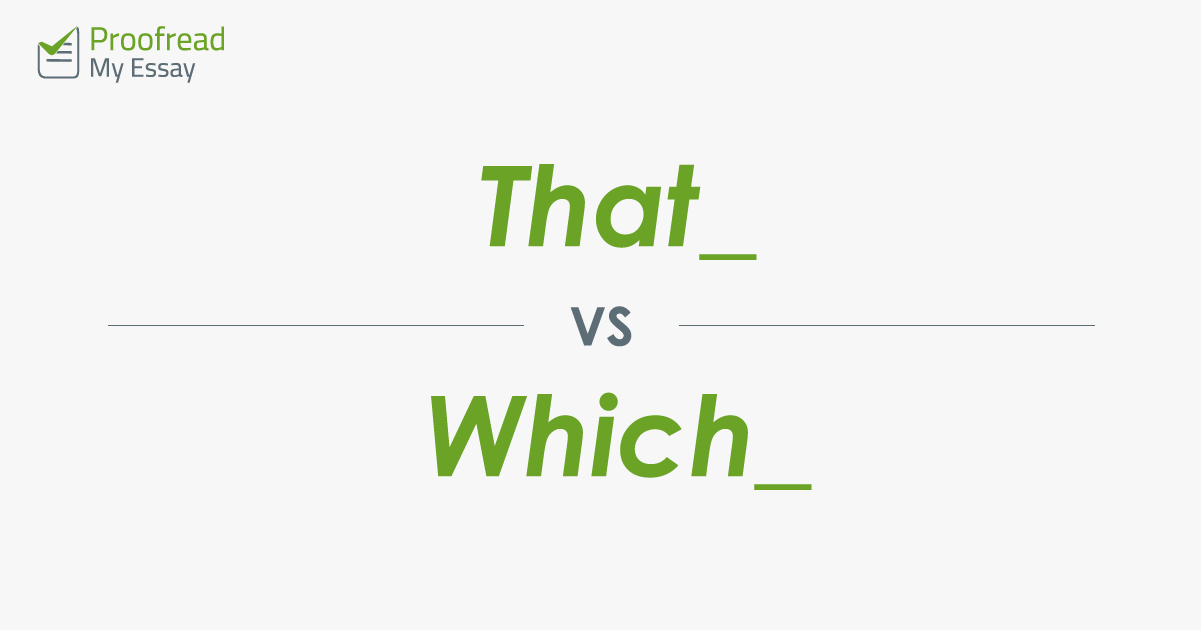
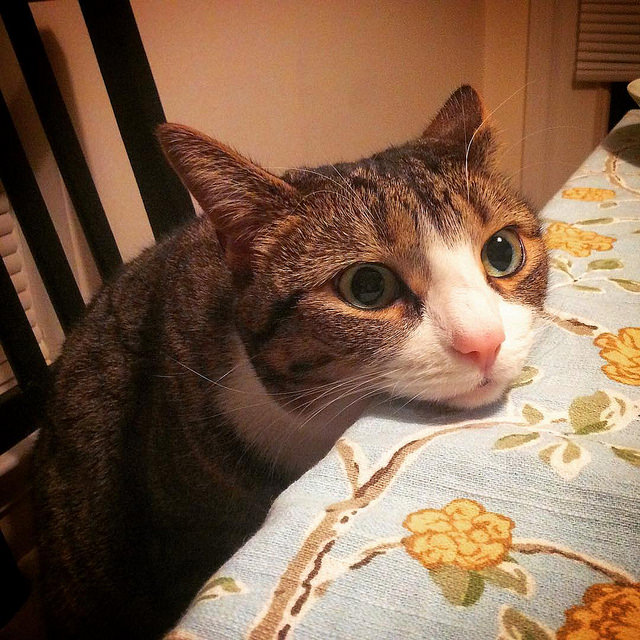
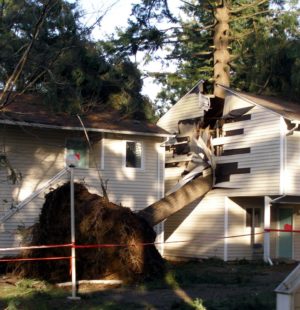


 Diane is an English teacher from New York with over four years of experience teaching English to students from all over the world.
Diane is an English teacher from New York with over four years of experience teaching English to students from all over the world.
